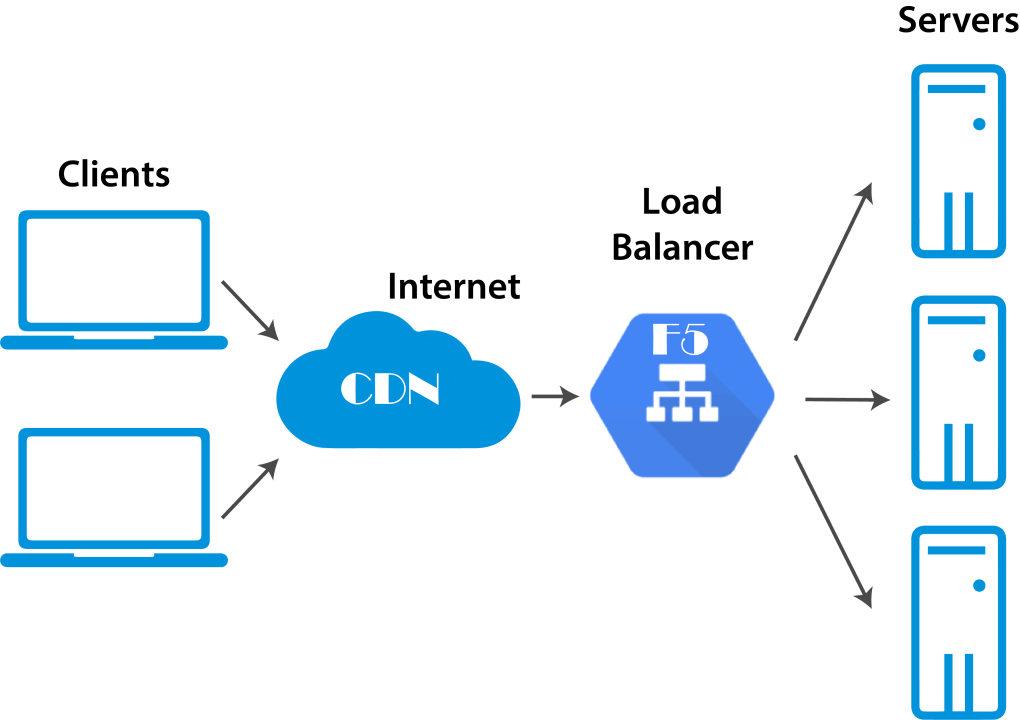Table of Contents
Introduction
In today’s digital-first world, ensuring fast, reliable, and secure access to applications is critical. This is where load balancing plays a pivotal role. By distributing network traffic across multiple servers, load balancers prevent any single server from becoming overwhelmed, ensuring optimal performance and uptime.

F5 Networks, a global leader in application delivery and security, offers one of the most robust solutions in this space: the F5 BIG-IP Load Balancer. Part of F5’s Application Delivery Controller (ADC) suite, BIG-IP goes beyond basic traffic distribution to provide advanced security, scalability, and automation. Let’s break down what makes this tool indispensable for modern IT infrastructure.
What is the F5 BIG-IP Load Balancer?
Definition
A load balancer acts like a traffic cop for your network, directing incoming requests (e.g., website visits, app logins) to healthy servers to avoid congestion. The F5 BIG-IP Load Balancer elevates this concept by combining traffic management with security, scalability, and programmability. It’s not just a load balancer—it’s a comprehensive ADC designed to optimize application performance, availability, and security.
Purpose
The BIG-IP exists to:
- Prevent downtime: By rerouting traffic during server failures.
- Boost performance: Using smart algorithms to distribute workloads efficiently.
- Enhance security: Blocking threats before they reach your servers.
- Support hybrid environments: Seamlessly managing traffic across on-premises, cloud, and multi-cloud setups.
Key Features of the F5 BIG-IP Load Balancer
1. Traffic Management and Optimization
- Local Traffic Manager (LTM): Distributes traffic using methods like Round Robin or Least Connections.
- Health Monitoring: Continuously checks server health, rerouting traffic if a server fails.
- DNS Load Balancing: Balances traffic at the domain level for global scalability.
2. Built-in Security
- Web Application Firewall (WAF): Blocks SQL injection, cross-site scripting (XSS), and other threats.
- DDoS Protection: Mitigates large-scale attacks that could cripple servers.
- SSL/TLS Offloading: Handles encryption/decryption to reduce server strain.
3. Scalability and Flexibility
- Hybrid and Multi-Cloud Support: Deploy on AWS, Azure, Google Cloud, or on-premises.
- Adaptive Scaling: Automatically adjusts resources during traffic spikes.
4. Programmability
- iRules: Custom scripts to route traffic based on specific criteria (e.g., geolocation).
- Integration with DevOps Tools: Compatible with Ansible, Terraform, and CI/CD pipelines.
How Does the F5 BIG-IP Load Balancer Work?
Basic Operation
- Traffic Distribution: Uses algorithms to route requests to the best-performing server.
- Health Checks: Monitors servers in real-time (e.g., response time, error rates).
- Failover: Automatically switches to backup servers during outages.
Advanced Capabilities
- Layer 7 (Application Layer) Routing: Makes decisions based on HTTP headers, URLs, or cookies.
- Global Server Load Balancing (GSLB): Directs users to the nearest data center using BIG-IP DNS.
Benefits and Use Cases
Key Benefits
- High Availability: Zero downtime during maintenance or failures.
- Faster Applications: Reduces latency via caching and compression.
- Unified Security: Protects against both network and application-layer attacks.
Real-World Use Cases
- E-Commerce Platforms: Manages Black Friday traffic surges while blocking fraud attempts.
- Healthcare Systems: Ensures HIPAA-compliant secure access to patient portals.
- Multi-Cloud Workloads: Balances traffic between AWS and Azure for a unified user experience.
Comparison with Other Load Balancers
| Feature | F5 BIG-IP | AWS ELB | HAProxy |
|---|---|---|---|
| Traffic Layer | Layer 4-7 | Layer 4-7 | Layer 4-7 |
| Security | Built-in WAF, DDoS | Basic SSL termination | Limited (needs add-ons) |
| Deployment Flexibility | Hybrid, multi-cloud | Cloud-only | On-premises, cloud |
| Customization | iRules scripting | Limited | Lua scripting |
Why Choose F5 BIG-IP?
- Ideal for complex, high-security environments (e.g., finance, government).
- Combines load balancing, security, and analytics in one platform.

















Comments